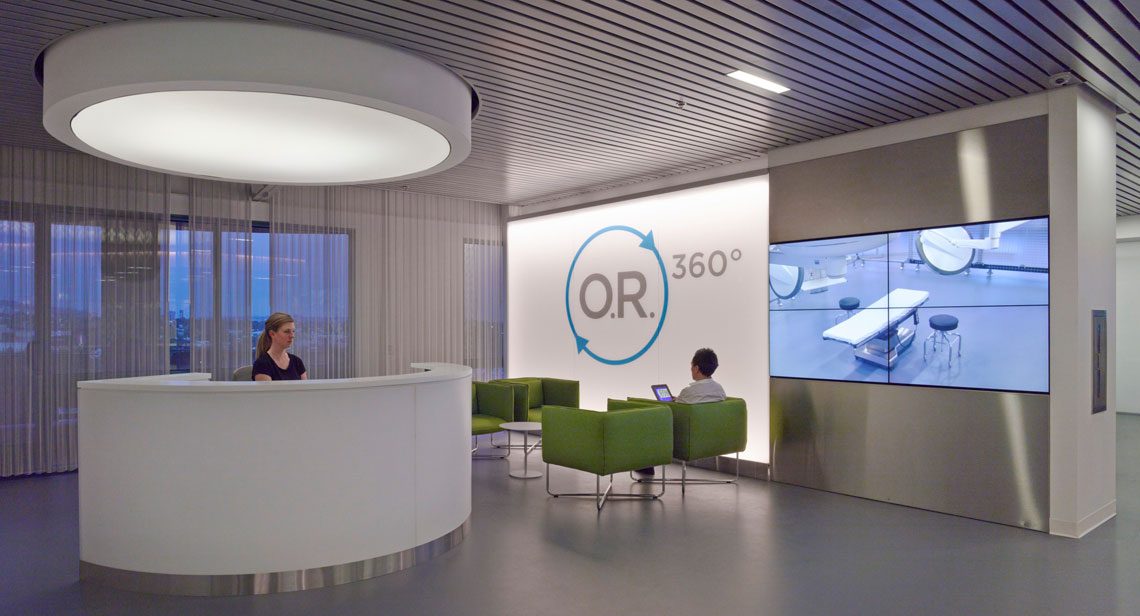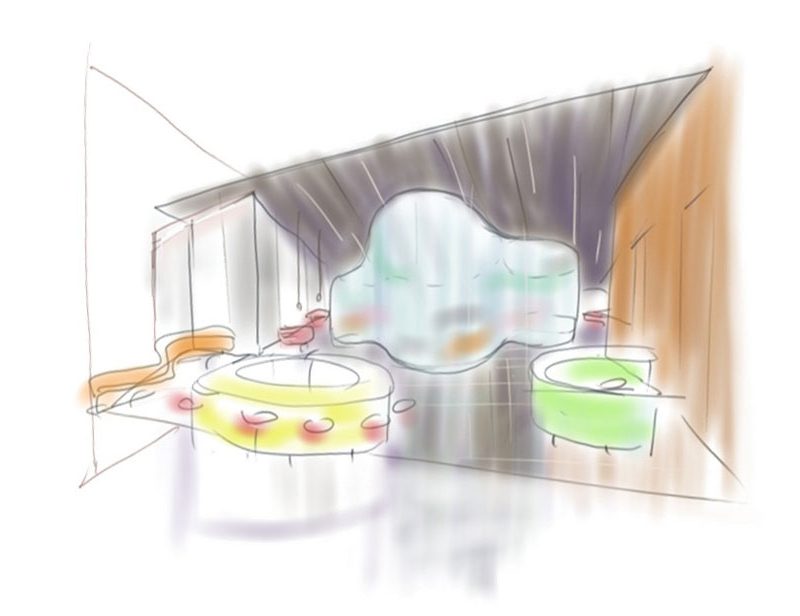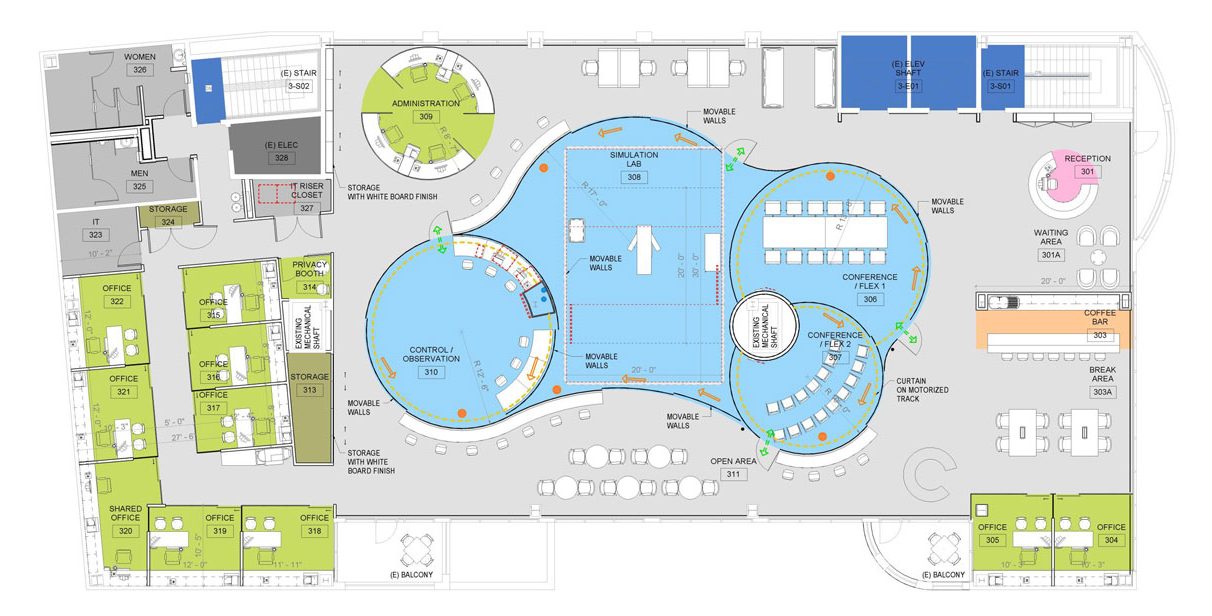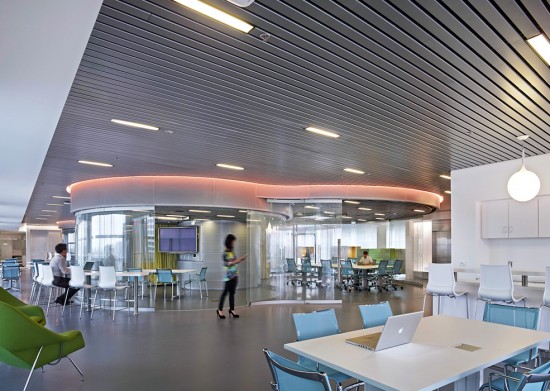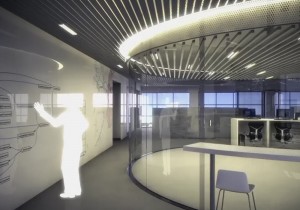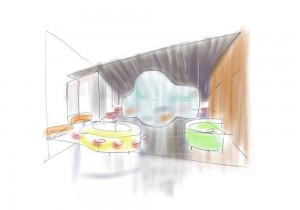An "operating room of the future" designed to support trauma care research
Under a partnership with the U.S. Department of Defense, Cedars-Sinai is using the OR 360° to explore how to improve outcomes in trauma patients during the “golden hour”–the first hour of emergency medical treatment, when swift care is most critical to survival. The simulation lab and operating room focus on improving care for wounded warriors by enhancing teamwork, process and hand-offs in trauma care. The facility is homebase to a diverse group of military and academic researchers committed to developing life-saving best practices that can be applied in both civilian and military environments. In 2015, OR 360° was named a finalist in Fast Company’s “Innovation by Design” awards.
Our team drew on techniques used in theater design to create a highly adaptive space that can be easily reconfigured. Ceiling equipment is moveable, walls are both moveable and demountable, and pieces of equipment are attached to ceiling tracks that pivot around surgical teams. These innovations help researchers explore multiple surgical scenarios and identify areas for improved efficiency and workflow. Academic offices, comfortable shared spaces, and flexible research areas are provided to prompt interdisciplinary collaboration and the sharing of information and ideas.
One of the guiding principles of the OR-360° is the consideration of human factors. Design interventions aimed at optimizing medical team performance—including color-coded trauma bays, whiteboards to display key patient information, and space for pre-briefings—effectively facilitate information gathering and reduce workflow disruptions in the simulated environment. Several of these solutions have already made their way into the real OR to help improve patient outcomes.
This is a new way to think about the improvement and delivery of healthcare. It’s not just about new techniques or technologies or drugs, but how all those things work in unison. By putting the patients and clinicians at the center of the system, and designing everything directly for their needs, we can develop trauma care for the 21st century that is fast, efficient, safe, and of the highest quality possible.
– Ken Catchpole, PhD, Director of Surgical Safety & Human Factors Research, Cedars-Sinai Medical Center


